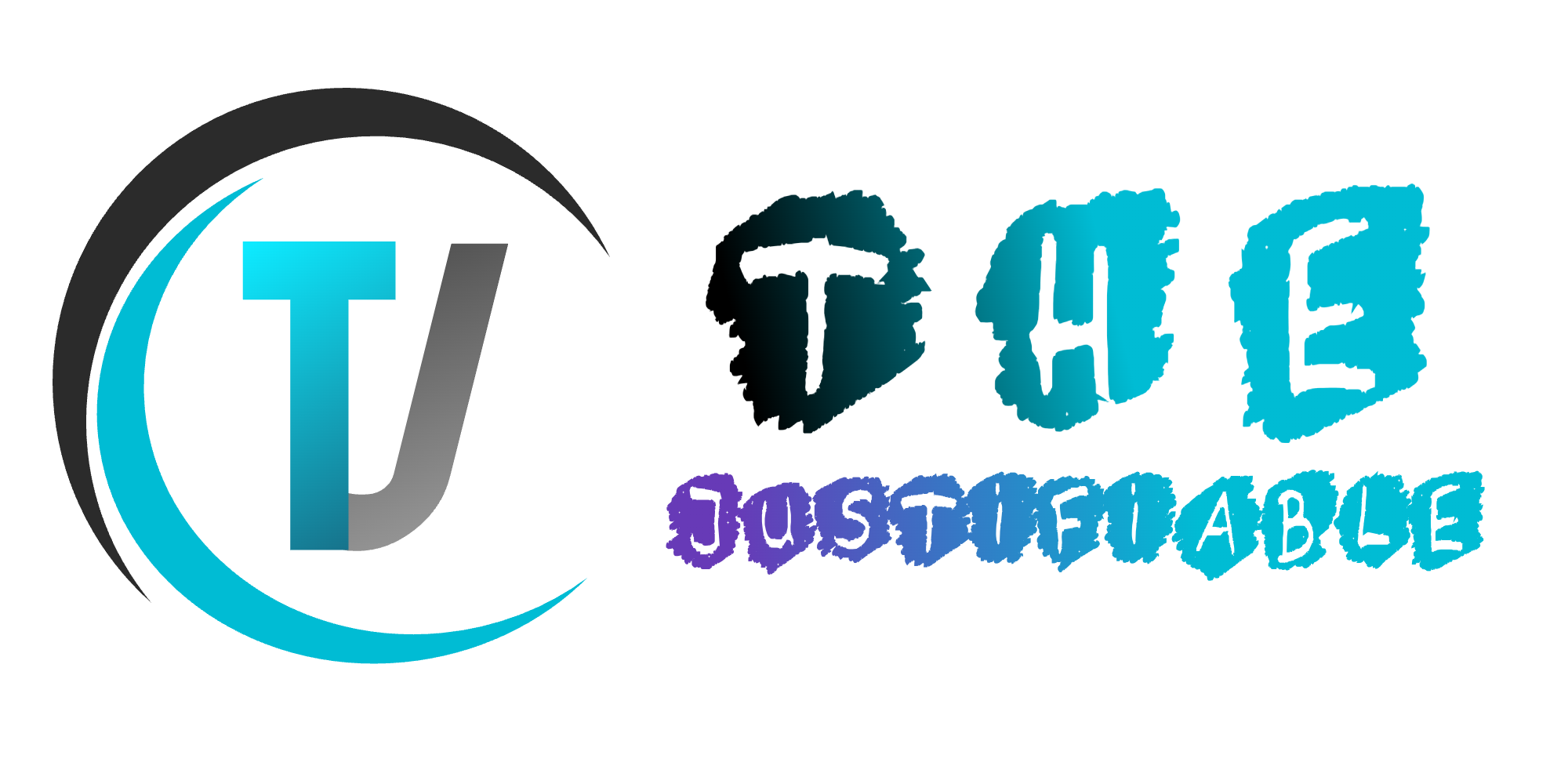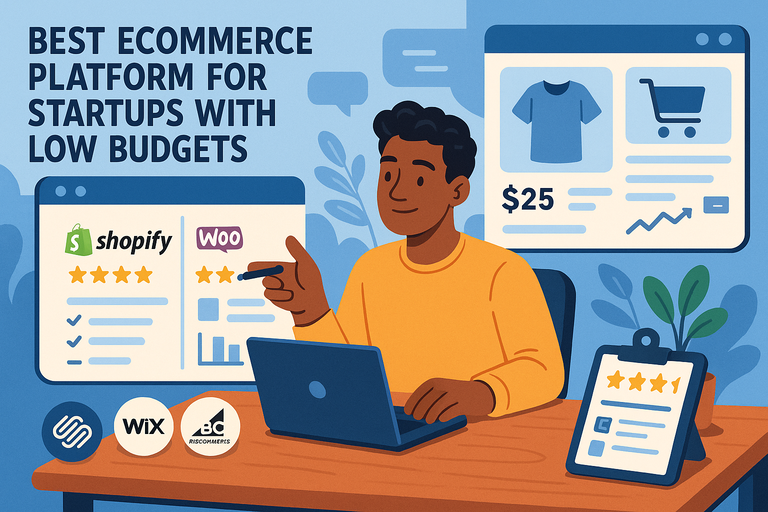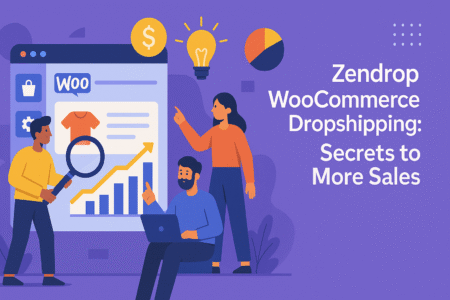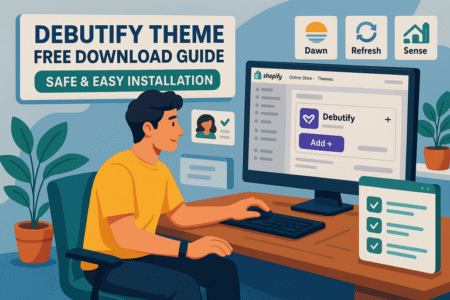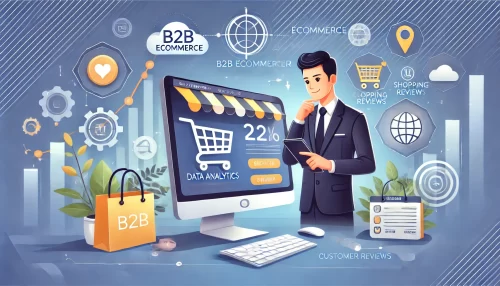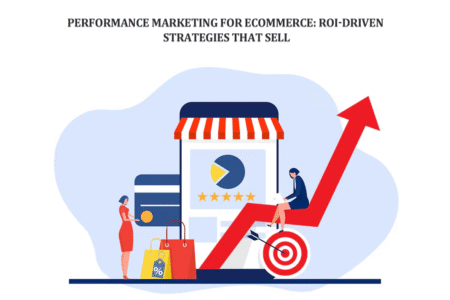Table of Contents
The best ecommerce platform can make or break a startup, especially when you’re working with a tight budget.
You want something powerful enough to grow with your business, but affordable enough to not drain your wallet from the start. With so many options out there, how do you know which one gives you the right mix of features, flexibility, and value?
That’s exactly what we’ll unpack here—helping you find the best ecommerce platform for startups with low budgets.
1. Shopify Lite: Affordable Way to Sell Online
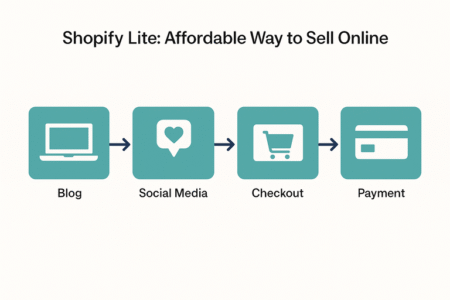
Shopify Lite is the stripped-down version of Shopify designed for people who don’t need a full online store right away. It’s made for startups that want to start selling without committing to high monthly costs.
Sell Through Social Media and Existing Websites
One of the best things about Shopify Lite is how it plugs into what you already have. Instead of building a full website, you can sell products directly on Facebook, Instagram, or even your existing WordPress or Squarespace site. It gives you a simple “Buy Button” you can copy-paste into any page, turning it into a sales channel instantly.
Imagine you’ve got a blog running on WordPress. By embedding Shopify Lite’s buy button, you can sell a product straight from your blog post without forcing readers to leave your site.
On Facebook, you can turn your business page into a mini store, complete with a product catalog and checkout. It’s a fast way to monetize the audience you’ve already built.
Use Built-In Payment Processing Without Extra Costs
Shopify Lite comes with Shopify Payments, which means you don’t need to figure out third-party processors like Stripe or PayPal separately. All transactions run smoothly inside Shopify’s system. You only pay transaction fees, which are standard in ecommerce anyway.
From your dashboard, you can view orders, issue refunds, and even track customer details. For a beginner, this eliminates the headache of juggling multiple platforms just to accept payments.
Why Shopify Lite Fits Startup Budget Needs
At just $9/month, Shopify Lite is one of the cheapest ways to enter ecommerce professionally. You get access to the same backend that powers full Shopify stores, but without the overhead.
I recommend it if your startup is testing the waters—say you’re selling a few handmade products or offering a digital download.
The main tradeoff: It won’t give you a standalone website with full customization. But if your goal is to start selling fast, it’s the leanest option out there.
2. WooCommerce: Flexible WordPress Ecommerce Plugin
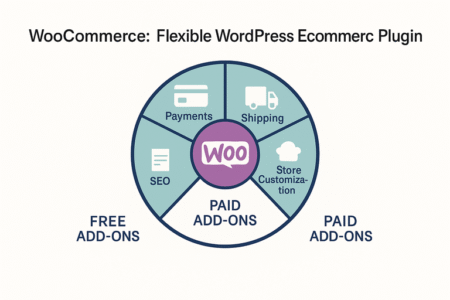
WooCommerce is not a standalone platform but a free plugin for WordPress that transforms your site into an ecommerce store.
If you already use WordPress for your website, WooCommerce is one of the most cost-effective ways to add a full shopping experience.
How WooCommerce Turns WordPress Into an Online Store
When you install WooCommerce, it adds product management, checkout, cart, and shipping features right inside WordPress. You can create product pages, set up categories, and even manage taxes and shipping zones.
Since it’s open source, WooCommerce gives you near-total control. You can tweak design elements, add custom code, or choose from thousands of compatible themes and plugins. For startups that want flexibility, this is huge—you’re not locked into one company’s ecosystem.
Affordable Hosting Options That Keep Costs Low
WooCommerce itself is free, but you’ll need hosting. Some budget-friendly providers like Hostinger, SiteGround, or InMotion offer WooCommerce-specific plans starting around $3–$5/month. That means for under $10/month, you can run a professional ecommerce site.
Compared to Shopify Lite, WooCommerce is more work to set up. You’ll need to handle hosting, SSL certificates, and updates yourself. But if you’re comfortable with WordPress already, this is a natural extension.
Free Extensions vs Paid Add-Ons for Customization
WooCommerce has an ecosystem of thousands of extensions. Many are free—like PayPal integration or simple shipping tools. Paid extensions can range from $30 to $200, covering advanced needs like subscriptions or booking systems.
My suggestion: Start with the essentials only. For example, use free PayPal or Stripe integration for payments, and a free SEO plugin like Rank Math for visibility.
As your startup grows, you can invest in premium extensions that actually generate ROI, like advanced analytics or cart recovery.
3. Big Cartel: Simple Store Builder for Small Inventories

Big Cartel is built with artists, makers, and small shops in mind. If you don’t need a giant store with hundreds of products, this is a great budget-friendly option.
Why Big Cartel Works for Creatives and Small Sellers
The platform focuses on simplicity. You don’t need coding skills, and you can launch a store in under an hour.
Big Cartel is especially popular among creatives—think jewelry makers, t-shirt designers, or digital artists—because it’s lightweight and designed for showcasing a small collection beautifully.
Unlike Shopify or WooCommerce, Big Cartel doesn’t try to be everything for everyone. It’s about giving small sellers a quick, easy way to sell without overwhelming them with features they’ll never use.
Free and Paid Plans With Transparent Pricing
Big Cartel’s free plan lets you list up to 5 products—perfect if you’re just starting out with a test run. Paid plans start at $9.99/month for 50 products, scaling up to $19.99/month for 500 products.
This kind of transparent pricing is refreshing. You don’t get nickel-and-dimed with hidden costs. For a startup on a shoestring budget, knowing your monthly costs upfront is a big deal.
Limitations to Know Before Choosing Big Cartel
The simplicity comes with tradeoffs. Big Cartel doesn’t offer as many advanced features as Shopify or WooCommerce. For example:
- Fewer integrations with third-party tools
- Limited design customization compared to WordPress
- Basic analytics rather than deep reporting
If your business grows beyond 100 products or you need advanced marketing automation, you’ll outgrow Big Cartel quickly.
But if you’re a small creator just trying to sell your work online without fuss, it’s one of the friendliest and cheapest ways to begin.
Pro tip: Think of these three platforms as different starting lanes. Shopify Lite is great if you want to sell through social or an existing site.
WooCommerce is perfect if you already have a WordPress setup and want full control. Big Cartel shines when you’re a creative seller who wants to keep things minimal.
4. Square Online: Free Store Builder With Payment Tools
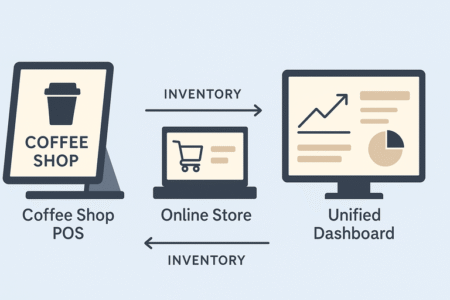
Square Online is a surprisingly strong option if you’re just dipping your toes into ecommerce and don’t want upfront costs.
It’s free to get started, and because it comes from Square (famous for its card readers), it has payments baked in from the very beginning.
How Square’s Free Plan Helps New Sellers Get Started
The free plan gives you everything you need to launch a basic online store—no coding, no hosting costs, and no tricky setup. You can add unlimited products, manage inventory, and even connect to Instagram for shoppable posts.
From the dashboard, you just click Online Store > Get Started, choose a theme, and start dropping in products. The checkout is already handled for you, so you’re not fumbling with payment gateways or SSL certificates.
For someone testing an idea—say, selling custom candles or digital downloads—the free plan is enough to validate whether customers are interested without spending money upfront.
Seamless Integration With In-Person Sales
Where Square Online really shines is if you also sell offline. For example, if you have a food truck or a booth at a farmer’s market, Square syncs all your in-person and online sales in one dashboard. Inventory updates automatically across both.
That means if you sell your last bag of coffee beans at the market, your online store immediately shows it as out of stock. No embarrassing “oops, we oversold” situations.
You can also set up “order online, pick up in store” or local delivery right from the platform, which is a lifesaver for small restaurants or shops.
Transaction Fees and Long-Term Affordability
Here’s the catch: while the free plan doesn’t cost a monthly fee, Square charges 2.9% + 30¢ per online transaction. That’s pretty standard across ecommerce, but it’s worth factoring in if you’re running on razor-thin margins.
If your sales grow, paid plans start around $29/month, removing Square branding and unlocking advanced features. I recommend starting free and only upgrading when the transaction volume makes sense.
Square Online is best if you’re already using Square for in-person sales or if you want a zero-cost way to experiment online.
5. Wix Ecommerce: Budget-Friendly Drag-and-Drop Builder
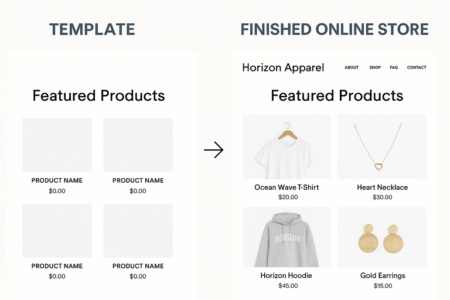
Wix started as a general website builder but has grown into a full ecommerce platform. The magic here is simplicity—you can drag, drop, and publish a store without touching code.
Easy-to-Use Store Builder Without Technical Skills
Wix is one of the easiest builders I’ve tried. You choose a template, and then the editor lets you move around text, images, and buttons like puzzle pieces. Want a product gallery above the fold? Drag it there. Want a video demo on the homepage? Drop it in.
The backend is equally user-friendly. From the dashboard, you click Store Products > Add New Product, upload photos, set prices, and you’re live. It’s almost fun compared to clunky setups elsewhere.
This makes Wix perfect for someone who isn’t technical and doesn’t want to pay a developer.
Low-Cost Plans That Scale as Your Business Grows
Wix has tiered plans, starting around $27/month for ecommerce. That’s not as cheap as Shopify Lite, but it includes hosting, SSL, and a professional site builder in one.
The value comes in scalability:
- You can start small with a basic plan.
- Upgrade as you need abandoned cart recovery, subscription payments, or advanced reports.
The freedom to grow without leaving the platform is reassuring—you won’t hit a wall like with Big Cartel’s product limits.
SEO and Marketing Features on a Budget
Wix has invested heavily in SEO and marketing tools. You can customize meta tags, alt text, and site structure right inside the editor. They even have a beginner-friendly SEO checklist that walks you through optimizing step by step.
Marketing tools are also solid for startups: built-in email campaigns, social media integrations, and even coupons or loyalty programs. While not as advanced as Shopify’s ecosystem, they’re more than enough to run real campaigns on a budget.
I suggest Wix if you want the easiest “build it yourself” store that looks professional and gives you SEO control without hiring outside help.
6. Hostinger Website Builder: Low-Cost All-in-One Option
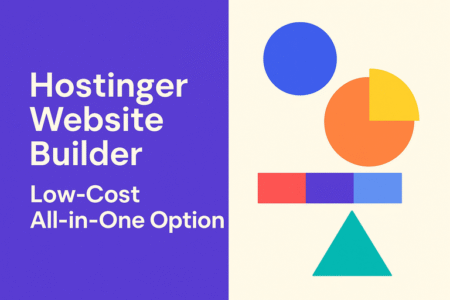
Hostinger isn’t just about cheap web hosting anymore—they’ve added a website builder with ecommerce built right in. The result is an all-in-one setup where you pay less but still get the basics covered.
Affordable Hosting Bundled With Store Builder Tools
Here’s the big draw: Hostinger’s plans often start under $3/month and include hosting, a free domain for the first year, SSL security, and the website builder. That’s an insanely low entry point compared to most platforms.
You can design your store using templates, add unlimited products, and manage orders in one dashboard. It’s not as polished as Wix or Shopify, but for the price, it’s a solid foundation.
For a bootstrapped startup, the fact that you’re paying hosting and ecommerce in one bill is a huge cost saver.
AI-Powered Features That Save Time and Money
One unique thing Hostinger pushes is its AI tools. You can generate a store layout in minutes by answering a few prompts, or even draft product descriptions using their AI writer.
That might sound gimmicky, but if you’re short on time (or writing isn’t your strength), it’s surprisingly handy. I’ve seen founders get a store online in less than a weekend using this shortcut.
AI also helps with SEO—suggesting keyword tweaks and structure improvements to help your pages rank. While I wouldn’t rely on it 100%, it’s a nice starter tool if you don’t have a marketing team.
Downsides of a Budget-Focused Builder
Hostinger’s website builder is cost-effective, but it’s not perfect. Some limitations you’ll bump into:
- Fewer third-party integrations compared to Shopify or WooCommerce.
- Templates are decent, but not as customizable as Wix.
- Customer support can feel slower compared to premium platforms.
So, while it’s a fantastic entry point, you might outgrow it faster than Wix or Shopify once your sales volume and marketing needs increase.
I recommend Hostinger if you’re laser-focused on minimizing upfront costs and want to experiment before committing to a higher-end platform.
Pro tip: Think of Square Online as the “zero cost” entry point, Wix as the “user-friendly designer’s choice,” and Hostinger as the “budget hacker’s tool.” Which one you choose depends less on features and more on your personal comfort level—whether you want speed, design freedom, or the absolute lowest monthly bill.
7. Weebly by Square: Budget Ecommerce for Small Shops
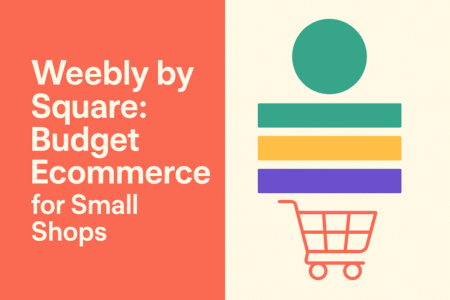
Weebly, now owned by Square, is a budget-friendly builder tailored for small businesses. It’s especially appealing if you’re already using Square’s payment system in person.
Easy Setup With Built-In Store Features
Weebly is one of the most straightforward builders I’ve used. You don’t need design experience—just choose a theme and start adding products. The editor is drag-and-drop, but less flexible than Wix, which actually works in its favor if you’re overwhelmed by too many options.
Key ecommerce features like inventory management, coupons, and tax calculations are included right from the start. No plugins required.
Free Plan vs Paid Plan—Which Works Best for Startups?
Weebly has a free plan that lets you sell online, but it comes with Square ads on your site and a subdomain (like yourstore.weebly.com). For testing the waters, this is fine.
The real value starts with the paid plans, beginning around $12/month. At that level, you remove Square branding, get more customization, and unlock advanced features like item reviews and shipping calculators.
I suggest starting free, then moving up as soon as you’re ready to treat your store as a brand.
Weebly’s Strengths and Weaknesses on a Low Budget
Strengths:
- Very easy to use, even for complete beginners.
- Affordable plans compared to most competitors.
- Perfect integration with Square’s POS for offline sellers.
Weaknesses:
- Limited design freedom compared to Wix.
- Fewer advanced ecommerce features than Shopify or WooCommerce.
- Free plan feels more like a trial than a long-term solution.
Weebly is a strong pick for brick-and-mortar shops adding online sales or solo sellers who want a no-fuss store.
8. Ecwid: Add Ecommerce to Any Existing Website
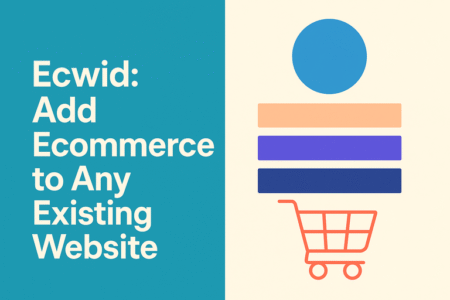
Ecwid isn’t a standalone store builder like Wix or Shopify—it’s a plugin you add to an existing site.
That makes it ideal if you already have a website and don’t want to rebuild everything from scratch.
How Ecwid Works With Websites You Already Have
Let’s say you’ve got a blog on WordPress or a portfolio on Squarespace. By adding Ecwid, you can drop a store module directly into your site. It looks native, not bolted on, and handles checkout securely.
From the Ecwid control panel, you manage your catalog, set prices, and adjust shipping settings. All of it syncs back to your website automatically.
Free Plan Features That Appeal to New Sellers
Ecwid’s free plan lets you sell up to 10 products with no monthly cost. You still get a secure checkout, responsive design, and even a mobile app to manage orders.
For a side hustle or testing product-market fit, this free plan is plenty. You can literally turn your blog into a functioning store in under an hour.
Paid Plans for Growth Without Breaking the Bank
As you grow, paid plans start at $15/month. That unlocks features like:
- Discount coupons.
- Automated tax calculations.
- Selling across Facebook, Instagram, and Amazon.
Higher tiers add abandoned cart recovery and advanced reporting. The beauty of Ecwid is how seamlessly it scales—you don’t need to migrate platforms when you outgrow the free version.
I recommend Ecwid if you’re happy with your current website and just want to add ecommerce without the hassle of rebuilding.
Best Value Recommendation for Startups
Now that we’ve explored all the options, it’s time to weigh cost against features and growth potential.
Comparing Cost vs Features Across Platforms
Here’s a quick snapshot:
| Platform | Starting Cost | Best Use Case | Key Limitation |
| Shopify Lite | $9/month | Selling via social or existing sites | No standalone website |
| WooCommerce | Hosting cost ($3–$5/month) | Full control for WordPress users | More setup needed |
| Big Cartel | Free (up to 5 products) | Small creative shops | Limited features |
| Square Online | Free | Online + offline sales | Transaction fees |
| Wix Ecommerce | $27/month | Easy design freedom | Can get pricey |
| Hostinger | ~$3/month | Cheapest all-in-one | Limited scalability |
| Weebly | Free/$12+ | Simple shops + POS users | Limited design |
| Ecwid | Free (10 products) | Adding ecommerce to existing site | Advanced features cost extra |
Which Platforms Scale Best for Long-Term Growth
- If you want to start dirt cheap but scale later: WooCommerce or Ecwid.
- If you want easy setup with design freedom: Wix.
- If you’re already selling offline: Square Online or Weebly.
- If you’re a creative with a handful of products: Big Cartel.
Final Verdict on the Best Ecommerce Platform
The best ecommerce platform for startups with low budgets depends on your situation:
- For testing ideas with almost no cost: Square Online (free) or Ecwid (free).
- For building a long-term brand: WooCommerce if you’re comfortable with WordPress, or Wix if you want drag-and-drop simplicity.
- For lean creators: Big Cartel or Zyro keep it minimal without overwhelming you.
My personal recommendation? If you want the lowest barrier to entry, start with Square Online or Ecwid. But if you’re serious about growing into a brand, I’d invest in WooCommerce early—it gives you maximum control without heavy monthly costs.
Pro tip: Start with the cheapest or free version of any platform, but keep an eye on scalability. The cost of switching platforms later can be much higher than paying a little more upfront for something that can grow with you.

